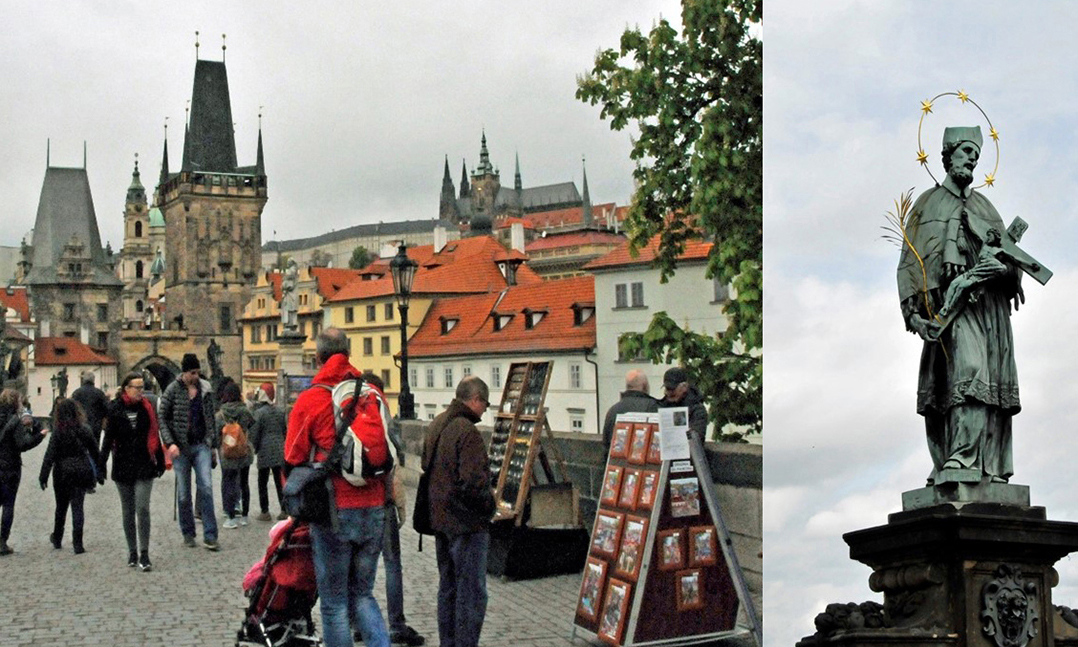A 600-year-old bridge in Prague, Czech Republic, is often considered the most beautiful bridge in Europe. A famous statue remembers a grim part of its history.
Prague lies along the 267-mile-long Vltava River that runs north and south through central Europe. By the Middle Ages, Prague had become the capital of Bohemia and an important trading city, with a fording site on the river. In 1170, the king of Bohemia built a bridge at the fording site, which was destroyed by a flood in 1342. In 1355, Charles IV became Holy Roman Emperor, determined to make his native Prague the most important city in the Empire. In 1357, he began building a new bridge across the Vltava, linking Prague Castle with Old Town. When completed in 1402, the bridge, later named Charles Bridge, was 1,693 feet long and 33 feet wide, supported on 16 sandstone arches. Traffic entered the bridge though massive Gothic towers.
In 1393, a cleric named John of Nepomuk became involved in a bitter religious dispute with Wenceslaus IV, the king of Bohemia. When John refused to back down, Wenceslaus ordered him tortured and thrown from the incomplete Charles Bridge into the river, where he drowned. John was buried in the Prague Cathedral and became the patron saint of Bohemia. In March 1683, on what was incorrectly thought to be the 300th anniversary of St. John’s death, a bronze statue of him was erected along the south side of the Charles Bridge, his head surrounded by five stars. During the following century, 29 more statues of saints were erected along the bridge.
Following reconstruction of the Charles Bridge in the 1970s, all but pedestrian traffic was banned. For good luck, many crossing the bridge touch it just below the statue of St. John of Nepomuk, now a replica of the original.



